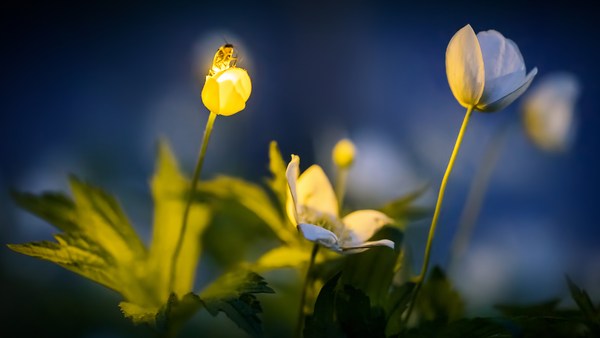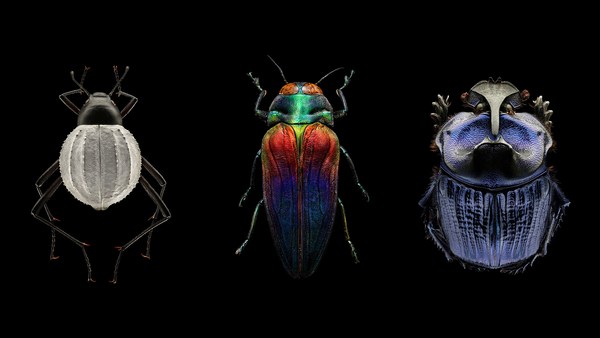Few insects have captured our imagination like the monarch butterfly. Their migration is one of the most iconic wildlife spectacles in North America, but they are also one of the best environmental indicators we have of the health of our ecosystems. And they have been in decline for the last 40 years. So they might be telling us a bigger story. A story about our relationship with the natural world.
Every year, these amazing insects undertake one of the most extraordinary journeys on this planet. It takes from three to five generations of monarchs to complete the whole migration. And it starts in Mexico in the spring, when the monarchs that spend the winter there travel back north to lay their eggs. So the first and second generation of monarchs are born and remain in the USA, and they live up to six weeks, more or less. But most migratory monarchs belong to the third and fourth generation, and they emerge in the late summer, early fall when the days start to get shorter and it's cooler and they feel it and they undergo a hormonal change in their bodies called the diapause. And this puts their mating instinct on hold. And they live longer then. This super generation will live up to nine months. And they will complete the trip to Mexico, 3,000 miles to a place where they have never been before. Because remember, they are the great granddaughters of the butterflies that left in the spring. How they do it, how they find the exact same location remains a mystery, especially if we consider that the sanctuaries, the forests they are looking for are located only on 12 isolated mountaintops in central Mexico, and these are the perfect conditions for the monarchs. It is cool and moist in high elevations. But for years scientists have been trying to answer the same question: how do they exactly find their way?
There are many hypotheses. Some say it has to do with geomagnetism. There are evidences that they use visual cues from the landscape. You know, the ridges of the mountains. There's even theories about the odor of the pheromones of previous butterflies that were there the year before. But the truth is that we don't know exactly. And they are continually actively researching this topic.
Physiologist Christine Merlin discovered that the monarchs use their antennae as part of a very sophisticated solar compass. And researchers from the University of Iowa are using this radio tracker to monitor the short-range movement of the monarchs when they feed. But this thing, as you can imagine, is very cumbersome. You cannot track the long-distance migration of a monarch with this. Until recently. A team from University of Michigan is developing what promises to be a breakthrough technology: an ultra-light sensor that, combined with an algorithm, will, for the first time, be able to track the single path of one monarch when they make it to Mexico, which is very exciting.
But often for these complex problems, the best and most efficient solutions are the simplest ones. We have been tagging monarchs for 30 years. We use these stickers that are very light, and they contain coded information and information about their origin. And this is how we discovered where the monarchs were spending the winter in the '70s. And today, it continues to be one of the most popular environmental education [activities] in North America, with volunteers having tagged more than two million butterflies in 30 years.
Now all these challenges that we face to track the monarchs are nothing if we compare them to what the monarchs themselves have to face throughout their long journey, especially starting in the prairies of North America, or at least what is left of them. Because every year we are losing one million acres of prairie being transformed into land development and agricultural fields. And in the '90s, this problem got worse because the widespread use of herbicides combined with genetically modified crops created a new problem. They basically wiped out the native grasses from the fields, including the milkweed. And the milkweed is the host plant of the monarchs. That means they need it to lay their eggs and to feed their hungry caterpillars. Without milkweed, the monarch population started to collapse.
Now our monarchs will continue their journey south, and they will have to face new threats, like roadkill that kills three percent of monarchs every year, or even light pollution from big cities that confuses them, it alters their patterns of sleep. But they will endure and eventually will reach Mexico. Aha, a last surprise, deforestation. Deforestation makes them more vulnerable to climate change. And as many of you know, climate change has many faces: droughts, heat waves or even snowstorms, like the one you are seeing in this picture, have become the major challenge for the monarchs in the short term. So I have to ask you don't let this beautiful illusion of plenty fool you, because the monarchs are in serious trouble.
But there's also good news, there's many people trying to protect them. Working with the local communities in Mexico has been essential to control the deforestation rates. Farmers are working with conservationists, and they are using drones to analyze vast tracts of fields in search of milkweed. Because the science is very clear, all the monarchs need is their habitat back. And we can do that by planting milkweed and by planting native grasses with flowers. That's why thousands of citizens along the migratory route are turning their backyards into habitat for the monarchs.
(Applause)
Even small parks in big cities like Chicago can help, because these are like gas stations, pit stops for the monarchs when they travel. And as you can imagine, farmers play an essential part. These strips that you see in the picture are called prairie strips and are strategically located into areas of the field to attract pollinators. But they also protect the soil and conserve the water, so they benefit the farming. And all I can say is they work because the only pair of mating monarchs that I was able to photograph during this story was during a visit to one of these prairie strips in Iowa. It will be the offspring of these butterflies that in subsequent generations will complete the cycle and make it back to Mexico. And here they will be receiving high honors.
(Laughter)
For the Mazahua people in Mexico, the monarchs are the souls of their ancestors, and the day of the Dead on November 1, honors this tradition. And as you can see, monarchs have become the undisputed pop icon of this celebration.
Now our monarchs now continue their life cycle in an alien world. Everything is different for them. They have never been here, they are tired, they huddle together. So the first days of the season they are really vulnerable.
(Video) I have spent the last 10 days doing the same thing in the mornings. They are getting so close to the branches I want. I think I have it, for the first time in many days. By many days, I mean 20 days. But I did get the shots that I needed. Thank you.
(Applause)
Now as new waves of monarch make it to Mexico, the branches soon fill up with clusters, and it is now when Dr. Green and his team will travel to Mexico, and they will try to locate a signal from that sensor they installed earlier. They need just one, one signal that can answer some of the questions that we have about the migration. I, as a photographer, I needed one monarch, just one, but from a very different perspective.
(Video) You see this tree that is behind me, and it's packed with monarchs. So if you get to see what I'm doing, there is this nice pattern. There's always one late monarch that tries to find the spot half an hour later than everyone else. And that's what I'm waiting for. The flashy orange butterfly in a texture of roosting monarchs. So we'll see.
So I would be that late monarch. 20 years chasing monarchs, and I cannot get enough of this kind of images. They are really effective, in my opinion.
(Applause)
Thank you.
(Applause)
Thank you very much.
There is an increase in the temperature as the season advances, and the monarchs start to get more active. They start to hang out in the local pub, which is the stream that runs down the hill. And with that increase of activity, there's also an increase in the tourism. And the tourism is the economic engine for this region during the winter months. And they all want to see this beautiful scene, the monarchs flying over the blue skies, an amazing sight. Sometimes it never happens, and sometimes it’s OK. But one day, one day, I got to witness something really extraordinary.
(Video) I have been to this reserve so many times, and I have never seen something like what we have encountered today. It's just amazing. You can see the sky is covered in butterflies.
(Camera shutter clicking)
(Speaking in Spanish)
All I want to do is to photograph.
And I see your faces, I know what you're thinking, that this was the easiest picture of my assignment. It took me 20,000 frames to get this thing right. So it was not easy at all.
So after all this time, I know for sure that if there is one iconic species in North America, this is the monarch. We are living in very polarized times, and the story of the monarchs can inspire hope again, can bring unity across our borders -- we need that. And most importantly, it can reconnect us again with the natural world. North America will be a much sadder place, this planet will be a much sadder place, if we lose the monarch. There is a growing movement to protect them, but we need to act now. So, muchisimas gracias, thank you very much.
(Applause and cheers)
Thank you, thank you very much.
(Applause and cheers)



